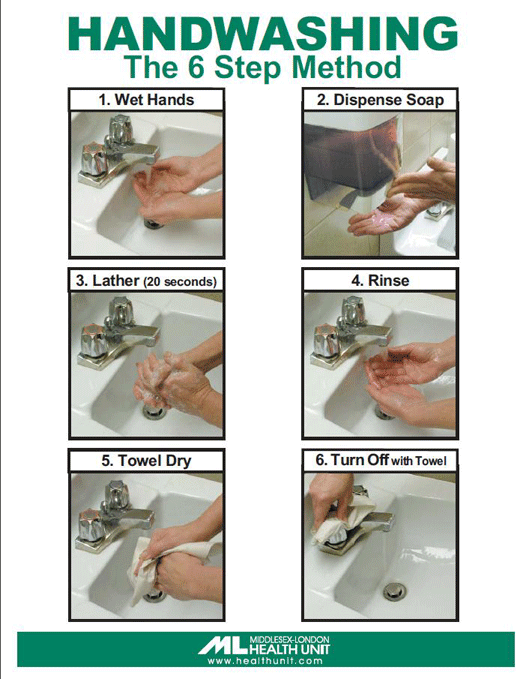Contact Us
For more information, please contact the Infectious Disease Control Team:
- 519-663-5317 Ext. 2330
 Salmonella Fact Sheet (PDF 301KB)
Salmonella Fact Sheet (PDF 301KB)For more information, please contact the Infectious Disease Control Team:
The sickness starts about 6 to 72 hours after the Salmonella get into your mouth. You might be sick for about seven days or for several weeks. Symptoms can include:
See a doctor if you think you are sick from Salmonella. Ask that your diarrhea be tested for Salmonella.
Salmonella infection does not need to be treated most of the time. Medicines may make it harder for your body to get rid of Salmonella. Do not take medicines to stop the diarrhea. Drink fluids, like water and juice, to replace the lost fluids.
Babies and people who have problems fighting disease may need to be treated.
The most common cause of infection with Salmonella bacteria is eating contaminated foods. These could include raw or undercooked meat, poultry, fish, eggs, raw milk and raw milk products, raw fruits and vegetables and their juices.
Salmonella can be spread to people through contact with infected animals, including birds, fish, amphibians, reptiles, pocket pets (rodents, hedgehogs), livestock, dogs, cats, their food and their environment.
Salmonella can be found in oceans, lakes, rivers, streams and in water supplies. Travelers to warm climates and developing countries can get Salmonella.
People with Salmonella in their intestines can spread it to others when they handle or prepare food.
Do not prepare food for others if you have Salmonella.
Salmonella can be spread by:
Salmonella is not spread by coughing, kissing, or through normal, everyday contact with neighbors or friends.
If you are employed as a food handler or a health care worker, go home or stay home. Report your symptoms to your manager. Contact your health care provider for stool testing.
Wash your hands well and follow The Six Steps to Good Handwashing (PDF 96KB) or use an alcohol-based hand rub.
Good hand washing is the best way to not get Salmonella.
 The 6 Step Method of Handwashing (PDF 96KB)
The 6 Step Method of Handwashing (PDF 96KB)Foods that are contaminated with Salmonella bacteria do not look or smell bad. Follow Food Safety at Home and use these four simple steps to Be Food Safe.
Clean
Separate
Cook
Keep hot foods hot above 60°C/140°F if not served right away.
Chill
If you have a salmonella infection, you will be contacted by your local Public Health Department for follow-up.